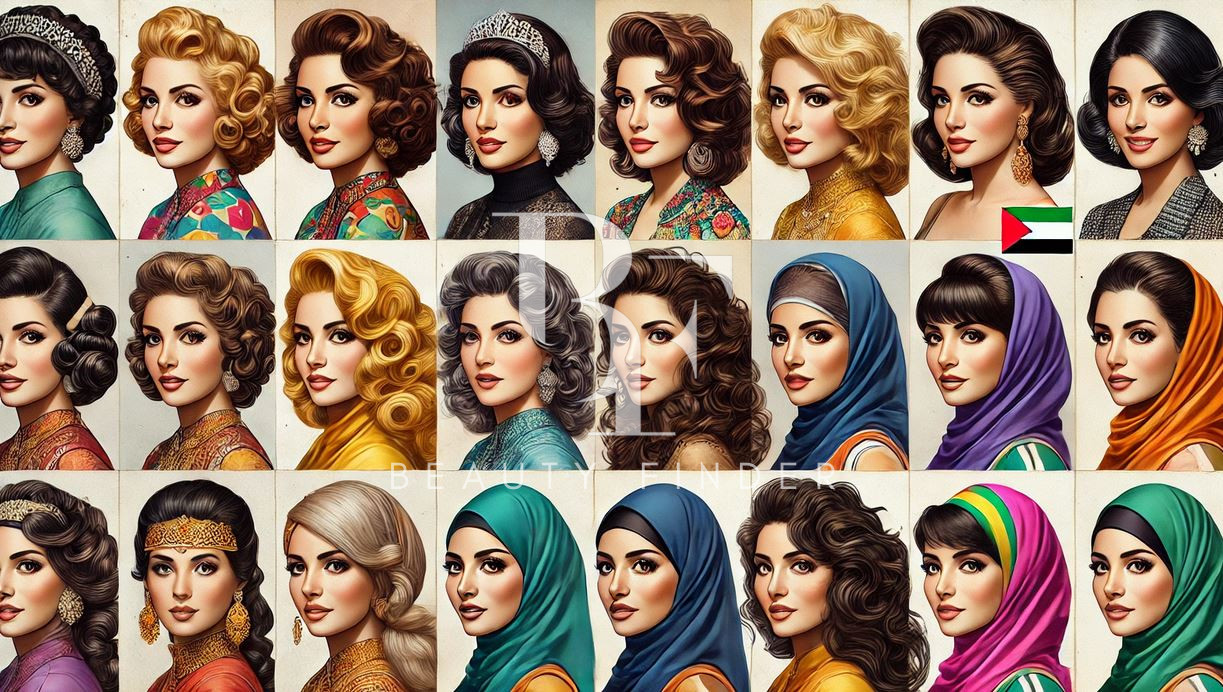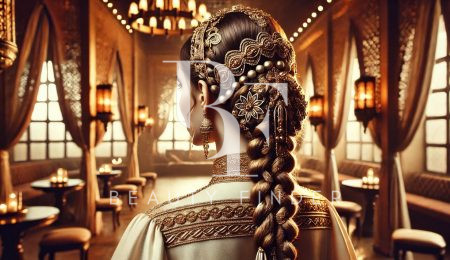The hairstyles of Arab women have evolved significantly from the 1950s to today, reflecting broader cultural shifts and the personal styles of influential figures. This journey through time highlights how these iconic looks have both inspired and been inspired by the changing roles of women in Arab society.
1950s: The Era of Classic Elegance
In the 1950s, Arab women often embraced classic and elegant hairstyles. This period saw the rise of famous figures like Nabila Ebeid, known as “Egypt’s first star.” Ebeid’s voluminous curls and neatly styled hair became a symbol of glamour in Egyptian cinema (Vogue Arabia).
1960s: Bold and Glamorous
The 1960s brought more experimental and bold hairstyles. Sabah, a prolific Lebanese entertainer, exemplified this era with her ever-changing hairstyles, from short brunette bangs to her iconic golden waves (Vogue Arabia). Another notable figure was Soad Hosny, the “Cinderella of the silver screen,” whose delicate features were complemented by her expressive hairstyles (Vogue Arabia).
1970s: Embracing Natural Beauty
During the 1970s, there was a shift towards more natural and effortless looks. Fairuz, the legendary Lebanese singer, often sported simple yet elegant hairstyles that highlighted her natural beauty and grace. Her influence extended beyond music, setting beauty trends across the Arab world (Discover Walks).
1980s: Volume and Extravagance
The 1980s were characterized by voluminous and extravagant hairstyles. Najat Al Saghira, an acclaimed Egyptian performer, was known for her grandiose updos adorned with glittering hairpieces. This era celebrated opulence and elaborate styling (Vogue Arabia).
1990s: The Rise of Modern Trends
In the 1990s, modern and sleek hairstyles became popular. Haifaa Al Mansour, Saudi Arabia’s first female filmmaker, often appeared with stylish, contemporary haircuts that reflected her groundbreaking work in a traditionally conservative industry (Vogue Arabia).
2000s: Fusion of Tradition and Modernity
The early 2000s saw a fusion of traditional and modern hairstyles. Ahd Kamel, the first Saudi actress to land a major role in a Netflix series, showcased versatile hairstyles that blended classic and modern elements, aligning with her diverse acting roles (Vogue Arabia).
2010s: Breaking Boundaries
In the 2010s, Arab women continued to break boundaries with their hairstyles. Zahra Lari, the first Emirati figure skater, made headlines not only for her athletic achievements but also for her participation in the Nike Pro Hijab campaign, promoting sports and modesty (Vogue Arabia).
2020s: Embracing Individuality
Today, Arab women are embracing individuality and personal expression more than ever. Influential figures like Sheikha Mozah bint Nasser Al Missned of Qatar, known for her sophisticated and modern hairstyles, continue to inspire women across the region to express themselves freely while maintaining cultural roots (Discover Walks).
Conclusion
The evolution of Arab women’s hairstyles from the 1950s to today showcases a rich tapestry of cultural and personal expression. Each era brought new styles that reflected broader societal changes and the unique personalities of influential Arab women. If you are looking for a hair salon near you, browse the beautyfinder.ae hair salon pages to find the perfect place for your needs. For more information and inspiration, visit Vogue Arabia, Forbes Middle East, and other leading fashion magazines.






Leave a Reply